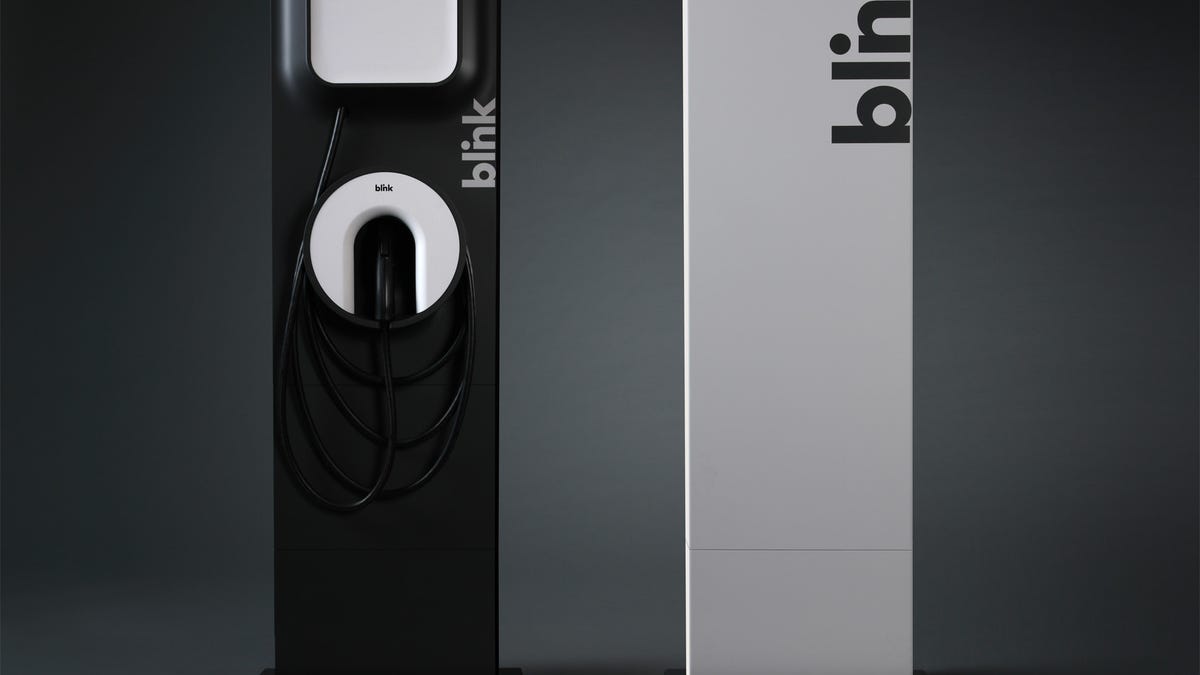Ecotality unveils consumer EV charging stations
The Blink line of charging stations for commercial services and home use will have cellular-network capability, as well as LAN, Wi-Fi, and ZigBee.

Ecotality unveiled Tuesday what will be one of the first commercially available charging stations specifically designed for electric vehicles and plug-in electric vehicles.
The Ecotality Blink line of charging stations, which will initially be implemented as part of the national EV Project, consists of a free-standing commercial model and a wall-mountable home model both made to work via a 240-volt AC input.
The Blink Level 2 wall mount charger for the home can be installed in a garage or outdoors in a carport. Ecotality estimates its station will take between two to six hours to fully recharge a vehicle battery.
Ecotality has released information in an attempt to answer the inevitable questions sure to be posed by the average consumer as EV charging station technology is introduced to the general public:
The Blink station is compliant with the national electric code requirements, and the plug part that goes into your car, which is the J1772 standard electric car plug agreed upon by the Society of Automotive Engineers, is "safe in wet or dry use."
The plug and cable can also "withstand being driven over by a vehicle."
The length of the electric cable is about 18 feet long, and the charging station includes a holder for that long cable.
The EV charging station integrates with an EV's drive system, so drivers can't accidentally put the car in drive and attempt to drive away while their car is still plugged in.
The Blink comes with a touch-screen display for operating it.
The machine has a built-in smart metering system to monitor usage.
In addition to introducing America to the basics of a an EV charging station, Ecotality announced Wednesday it has signed an agreement with Qualcomm to implement its technology into Blink stations so that the stations can communicate over cellular networks. The Qualcomm tech will allow the charging stations to use cell networks to transfer usage data, as well as perform firmware updates. But the Blink stations, according to Ecotality specs, will also have the capability to use LAN, wireless IEEE 802.11g, or ZigBee to communicate.
The Blink home station will be able to communicate directly with utilities, and take direction from the user via a Web application or smartphone that will also allow the user to regulate when the charger kicks on. The station itself can also be timed for personal convenience, or to automatically work in sync with off-peak electricity times and rates.
The Blink Level 2 Pedestal EVSE commercial version offers almost the identical features of the home model, with a few more bells and whistles. It's a free-standing unit, as opposed to the wall-mountable version, and its stand offers a large beacon light, advertising space, and the ability to support payment software. Unlike the home version, the commercial station comes without timer or off-peak programming capability.
Pricing for the devices has not yet been announced, but several of them distributed in the initial rollout might actually be free for consumers. General Motors announced in June that the first 4,400 buyers of the Chevy Volt, for example, will be offered the option to have a free charging station installed at their home. The cost of the station and installation will be paid for by the Department of Energy under the Transportation Electrification Initiative funds inside the American Recovery and Reinvestment Act. The stations will be provided and installed by either Ecotality or Coulomb Technologies, so the Blink will be one of the possible stations Chevy Volt owners receive for free.
As has been previously reported, the Ecotality charging stations as part of the EV Project will begin to be installed throughout the U.S. this fall. Ecotality expects to install over 15,000 stations as part of the program.
Ecotality follows Petra Solar in employing cellular network technology as a smart-grid communication tool. The solar panel manufacturer announced in early July it had signed an agreement with AT&T. Over 200,000 solar panels attached to utility poles throughout New Jersey will now communicate with the utility Public Service Electric & Gas over AT&T's wireless network.

